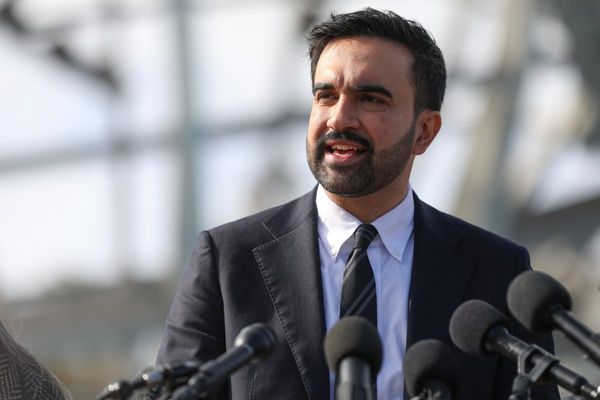
Ukrainian President Volodymyr Zelenskyy has announced his country might soon quit the Ottawa Treaty banning antipersonnel landmines amid his country’s war with Russia.
“Russia has never been a party to this convention and uses antipersonnel mines with extreme cynicism,” he said on Sunday.
This was not a mere rhetorical flourish. In August 2023, Russian soldiers booby-trapped the bodies of their fallen comrades with anti-personnel mines as they retreated to kill the Ukrainian sappers who discovered them.
Ukraine needs to even the battlefield, Zelenskyy said, because “antipersonnel mines … very often have no alternative as a tool for defence.”
What is the special role of antipersonnel landmines? Why are they banned in many countries? Why is Ukraine leaving the treaty now, and what will that allow it to do in its own defence?
What is the Ottawa Treaty?
The Ottawa Treaty of December 1997 bans the use of anti-personnel landmines, as well as the ability to “develop, produce, otherwise acquire, stockpile, retain or transfer to anyone, directly or indirectly, anti-personnel mines”.
The treaty has been ratified by more than 160 countries and is part of the body of international law enshrined in the United Nations. As its name suggests, it aims to abolish landmines.
Major powers like China, Russia and the United States have never signed it although the US did agree to stop stockpiling antipersonnel landmines under President Barack Obama, a move reversed by his successor Donald Trump.
The rationale behind banning landmines is that they are indiscriminate killers.
“Landmines distinguish themselves because once they have been sown, once the soldier walks away from the weapon, the landmine cannot tell the difference between a soldier or a civilian – a woman, a child,” said Jody Williams, who coordinated the International Campaign to Ban Landmines, which led to the Ottawa Treaty.
“While the use of the weapon might be militarily justifiable during the day of the battle, … once peace is declared, the landmine does not recognise that peace,” Williams said when she accepted the Nobel Peace Prize in 1997. “The war ends. The landmine goes on killing.”
They are not the first weapons to be banned. Chemical agents were banned after World War I in the Geneva Convention of 1925 because the use of chlorine gas by the Germans had led to devastatingly painful injuries.
Zelenskyy has accused Russia of violating the ban on chemical weapons use as well, a charge Moscow has rejected.
How will leaving the Ottawa Treaty help Ukraine defend itself?
The treaty prohibits the use, production and stockpiling of antipersonnel landmines. Ukraine, which ratified the treaty in 2005, has already returned to their use. In November, the US supplied Ukraine with landmines.
At the time, this was because of a drop in Russian use of mechanised armour and an increase in the use of foot soldiers.
“They don’t lead with their mechanised forces any more. They lead with dismounted forces who are able to close in and do things to kind of pave the way for mechanised forces,” then-US Defense Secretary Lloyd Austin said, explaining the decision.
“So that’s what the Ukrainians are seeing right now. And they have a need for things that can help slow down that effort on the part of the Russians.”
Leaving the treaty will allow Ukraine to produce and stockpile landmines. The move points towards a scaled-up and more permanent use.
The effectiveness of landmines became apparent in June 2023 when Ukraine launched a counteroffensive intended to take back swaths of Russian-occupied territory.
The counteroffensive failed largely because Russian defenders had dug themselves into trenches but also because they had planted minefields that went on for several kilometres before their positions.
Russian Major General Ivan Popov, commander of the 58th Combined Arms Army of the Southern Military District, said Russian minefields played a “very important role” in defeating the initial Ukrainian advance.
NATO’s then-Military Committee chief, Dutch Admiral Rob Bauer, confirmed that mines had been a major obstacle.
By July, Ukraine had abandoned efforts to punch mechanised columns through Russian defences and focused on wearing Russian defenders down over time.
Why is Ukraine leaving the Ottawa Treaty now?
Ukraine’s move comes amid a spate of departures from the treaty. Poland and the Baltic states – Estonia, Latvia and Lithuania – announced in March that they would leave the treaty, saying the security situation in the region has “fundamentally deteriorated”.
Finland followed the following month to “prepare for the changes in the security environment in a more versatile way”.
All share a border with Russia or with Kaliningrad, a Russian enclave wedged between Poland and Lithuania on the Baltic Sea.
“There is a bunch of countries that are already going out from the Ottawa agreement on using these kinds of landmines. It’s normal,” said Victoria Vdovychenko, a defence expert at Cambridge University’s Centre for Geopolitics.
“It means that these countries are prioritising their national security and they are prioritising that it can be used in the context of potential warfare,” she told Al Jazeera.
Keir Giles, a Eurasia expert at the think tank Chatham House, told Al Jazeera these countries being a party to the Ottawa Treaty was a way of proving their political credentials to join Western clubs, such as NATO and the European Union.
“They had to sign up to prove membership of the club,” he said, “and so were reluctant to do anything which didn’t have them as the most forward-leading, liberal, progressive members of that club.”
“Anybody that wanted to sign up to doing what seemed right in the eyes of the global liberal elite would have done things like this whether or not it made long-term strategic sense,” Giles said, “persuaded, of course, by NATO that they wanted to focus on expeditionary operations and Russia would never be a problem again.”
The timing of the Eastern European countries’ departure is related to threat assessments shared by NATO countries.
NATO’s Bauer said in January 2024 that NATO needed to prepare for war with Russia and NATO members were living in “an era in which anything can happen at any time, an era in which we need to expect the unexpected, an era in which we need to focus on effectiveness”.
At the same time, German Defence Minister Boris Pistorius said a Russian attack on Germany was no longer ruled out. “Our experts expect a period of five to eight years in which this could be possible,” he said.
Since then, other eastern NATO members have said Russia poses a threat to their security.
Another element to the timing is the intensified Russian use of combined drone and missile attacks on Ukrainian cities, particularly Kharkiv, Kyiv and Odesa.
That implied that Russia may be preparing to drive the ground war towards parts of Ukraine that are currently far from the front lines, Vdovychenko said.
“We are not talking about the front lines. We are talking actually about [rear] areas and even the residential areas of Ukraine, so not so-called red line cities or communities but actually yellow cities and communities, which means slightly farther from the red line zones,” she told Al Jazeera.
In recent months, Ukraine has also faced several renewed Russian attempts to open new fronts in its northern regions of Kharkiv and Sumy.







